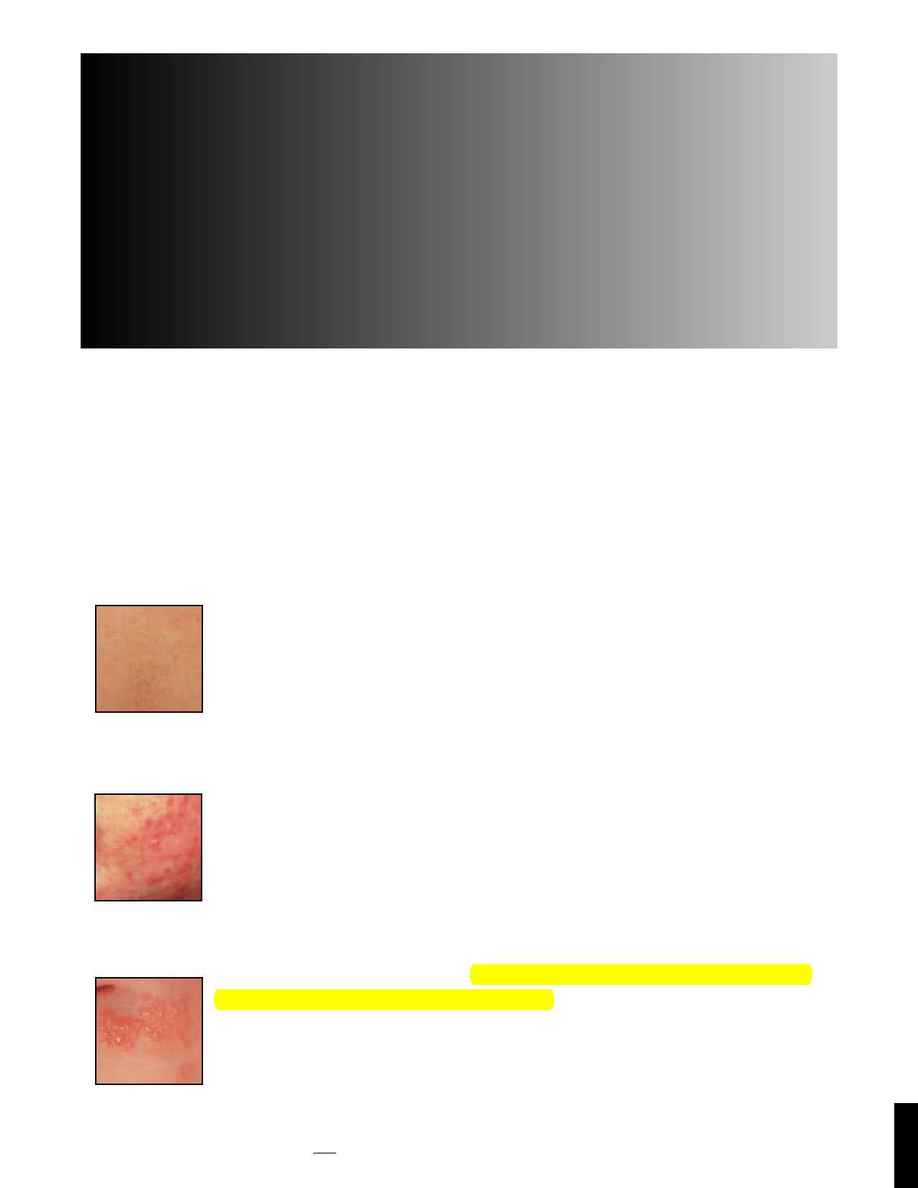
1
5
The symptoms or signs of a disease are divided into two classifications:
· Subjective those you feel
· Objective those you see
In other words, signs of a disorder or disease may be felt but nothing may be visible. Itching,
burning, pain or symptoms that are felt are examples of subjective symptoms. Pimples or inflam-
mation are objective symptoms because they are visible. In some cases, both objective and subjec-
tive symptoms may be present. Avoid direct contact with open wounds and/or tumors.
There are six signs of infection: pain, swelling, redness, local fever (heat), throbbing,
discharge. Always avoid performing services on skin that displays any of these symptoms.
Lesions
Diseases and disorders are often accompanied by skin lesions, which are any abnormal changes in
the structure of an organ or tissue. There are three categories of lesions: primary, secondary and ter-
tiary. As a salon professional, you need to recognize primary and secondary lesions.
Primary Skin Lesions
Primary skin lesions include the following:
Macules are a discoloration appearing on the skin's surface. They are flat areas and, although
they are usually rounded and distinct, they may be oval, irregular or have an outline
that gradually fades into surrounding tissues. They may vary in size but are gener-
ally less than one cm in diameter.
A freckle is an example of a macule. The technical name for freckles is lentigines
(len-tih-JEE-nees).
Papules are hardened red elevations of the skin in which no fluid is present. These lesions
normally vary in size from that of a pinhead to that of a pea. The actual shape and
coloration of the lesions may vary. Consistency may vary from hard to soft. Papules
may persist unchanged but they can, sometimes, proceed to other types of primary
lesions. A large papule is known as a tubercle.
A pimple is an example of a papule.
Vesicles are fluid-filled elevations in the skin caused by localized accumulation of fluids or
blood just below the epidermis. Vesicles may develop from macules, papules or
poison oak or ivy and are generally short-lived.
Herpes simplex*, also known as fever blisters, is a contagious, chronic condi-
tion characterized by a single vesicle or a group of vesicles on a red, swollen
base. It usually appears on the lips, nostrils or other parts of the face.
609
THE STUDY OF SKIN
*Indicates that services may not be performed.
